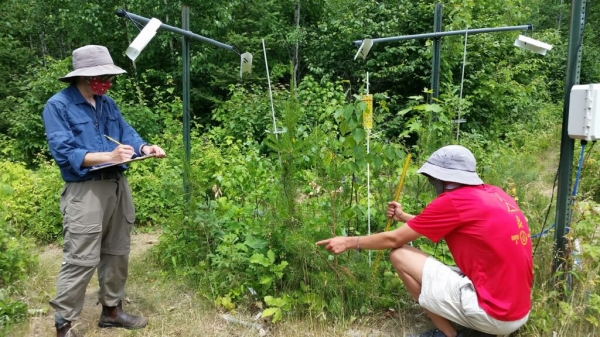Even relatively modest climate warming and associated precipitation shifts may dramatically alter Earth’s northernmost forests, which constitute one of the planet’s largest nearly intact forested ecosystems and are home to a big chunk of the planet’s terrestrial carbon.
That’s the main finding from a unique five-year experiment, led by a University of Michigan ecologist, that used infrared lamps and soil heating cables to study the projected impacts of near-term climate change on thousands of seedlings from nine tree species found in far northern forests, which are known as boreal forests.
North America’s boreal forests contain mostly conifers such as spruce, fir and pine. They are found mainly in Canada and Alaska but also occur in parts of northeastern Minnesota, a tiny bit of Michigan’s Upper Peninsula, and northern Maine. The boreal forests are bounded on the north by tundra and on the south by temperate forest.
Read more at University of Michigan
Image: Researchers measure saplings growing on an experimental plot at a University of Minnesota field site in northeastern Minnesota. Photo was taken in July 2020, during the COVID-19 pandemic. (Credit: Raimundo Bermudez, University of Minnesota)


